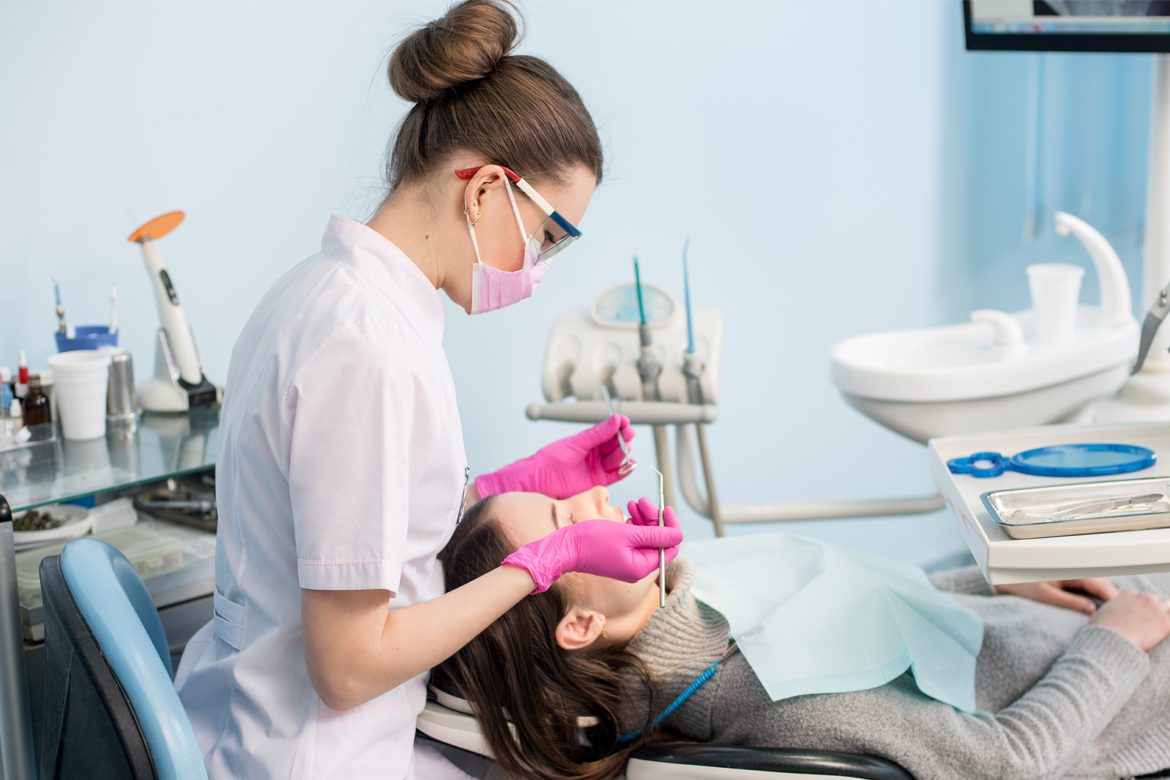Do you remember when you applied to dental hygiene school and how excited you were picturing your future in colorful scrubs, visiting with patients, and helping create healthy smiles? Little did you know your body was about to shout “Surprise!” as you experienced recurring aches and pains. Dental hygiene, though an amazing career, can take a toll on your body. Aches and pains may eventually affect many dental hygienists, but fortunately there are solutions and preventive steps that may help.
What are those aches and pains? They’re musculoskeletal disorders (MSDs), which typically arise from someone’s professional occupation. Careers with repetitive movements and static, awkward positions contribute to MSDs. In general, the most common sites for MSDs in dental professionals are the neck, shoulders, wrists, hands, and back.
Carpal tunnel syndrome (CTS) is an extremely common MSD that’s frequently diagnosed in dental professionals. In fact, the dental workforce is 10 times more likely to develop CTS than any other professional workforce in the United States.
As new graduates, we wanted to understand more about what causes MSDs and their associated risk factors to help prevent these in our own careers. The risk factors fall into three categories: biomechanical, environmental, and psychosocial.
Biomechanical risk factors include the daily mechanical movements and forces used to perform tasks such as using hand scalers and ultrasonic scalers. According to Blake McGowan, repetitive tasks, excessive force, awkward positions, prolonged sitting and standing, and static postures are the primary biomechanical risk factors for MSDs among dental hygienists.
Environmental factors involve how the working environment can impact the body. One new environmental factor that can increase the chance of a chronic MSD is the onset of the SARS-Cov-2 pandemic. The use of additional personal protective equipment (PPE) has increased our mental stress and reduced the freedom of movement we enjoyed before the pandemic.Things that can improve our working environment include having a good clinician chair and adequate lighting to see inside the oral cavity.
The psychosocial risk factors are those that might impact our feelings and emotions, such as the long hours and heavy patient load.3
Modalities to relieve pain
In addition to practicing good ergonomics and improving the working environment, we explored therapeutic modalities to relieve pain and prevent long-term issues associated with MSDs. Chiropractic care was of particular interest to us. Doctors of Chiropractic (DC) are health-care providers who focus primarily on the musculoskeletal system and how it relates to the nervous system.
The American Chiropractic Association (ACA) estimates that 35 million Americans seek care from a DC yearly. One of the most common therapeutic approaches used by chiropractors is spinal manipulation or adjustments. According to Craig Gonzales, DC, one of the chiropractors we interviewed, manipulation is defined as adjusting the joints and spine back to their original form and function through controlled force. This can be accomplished manually or with an instrument-assisted technique. Through various chiropractic adjustments, patients experience reduced pain, increased movement, and improved performance.
Since dental hygienists are at greater risk for chronic pain and MSDs due to the repetitive nature of their job, chiropractic care is one of many treatment options they can pursue for relief. Chiropractors can help hygienists understand why they are experiencing pain and what can be done to prevent it. This may include changing posture, stretching in between patients, and exercising regularly. Using joint manipulation modalities, chiropractors can also treat the flareups that may occur during a dental hygienist’s career.

